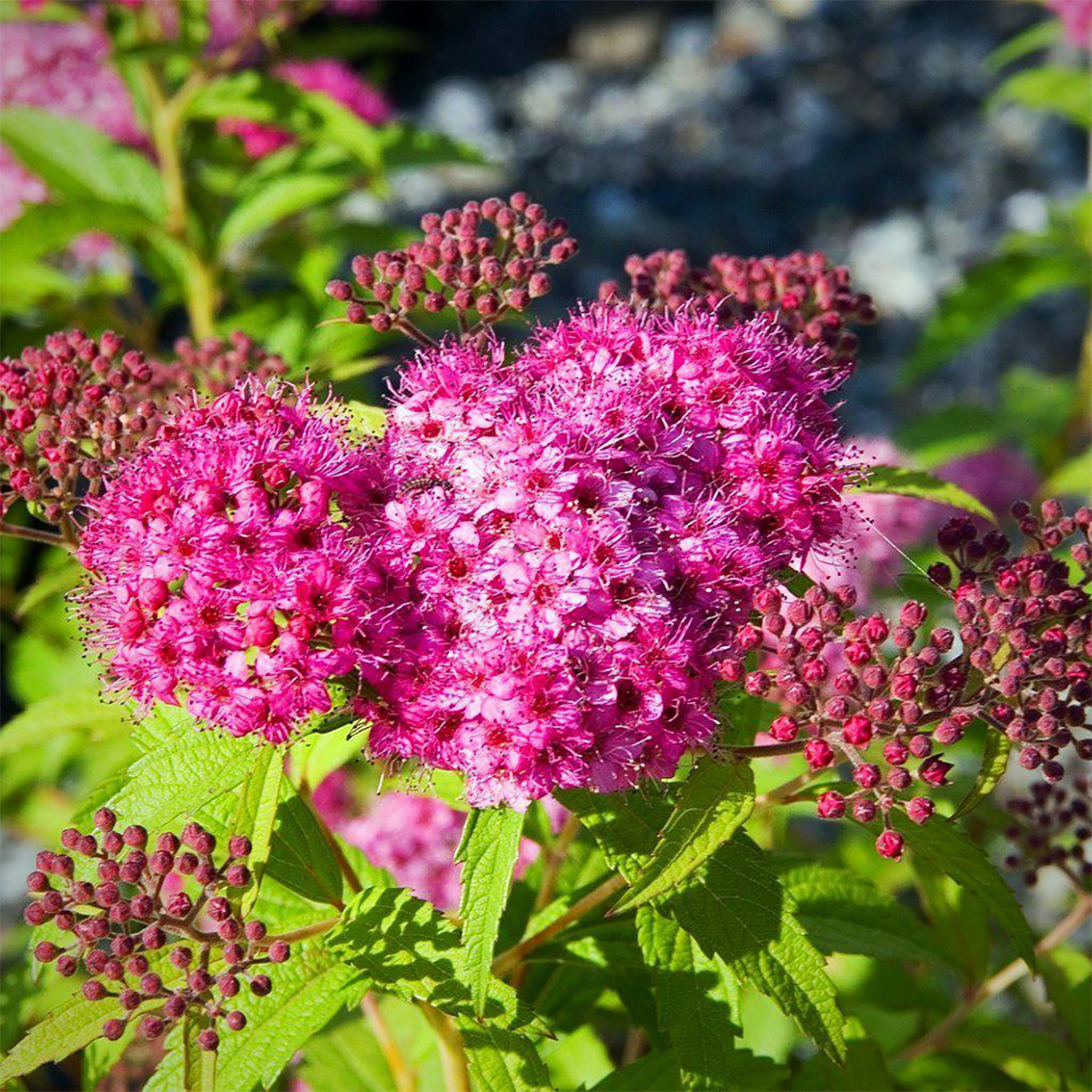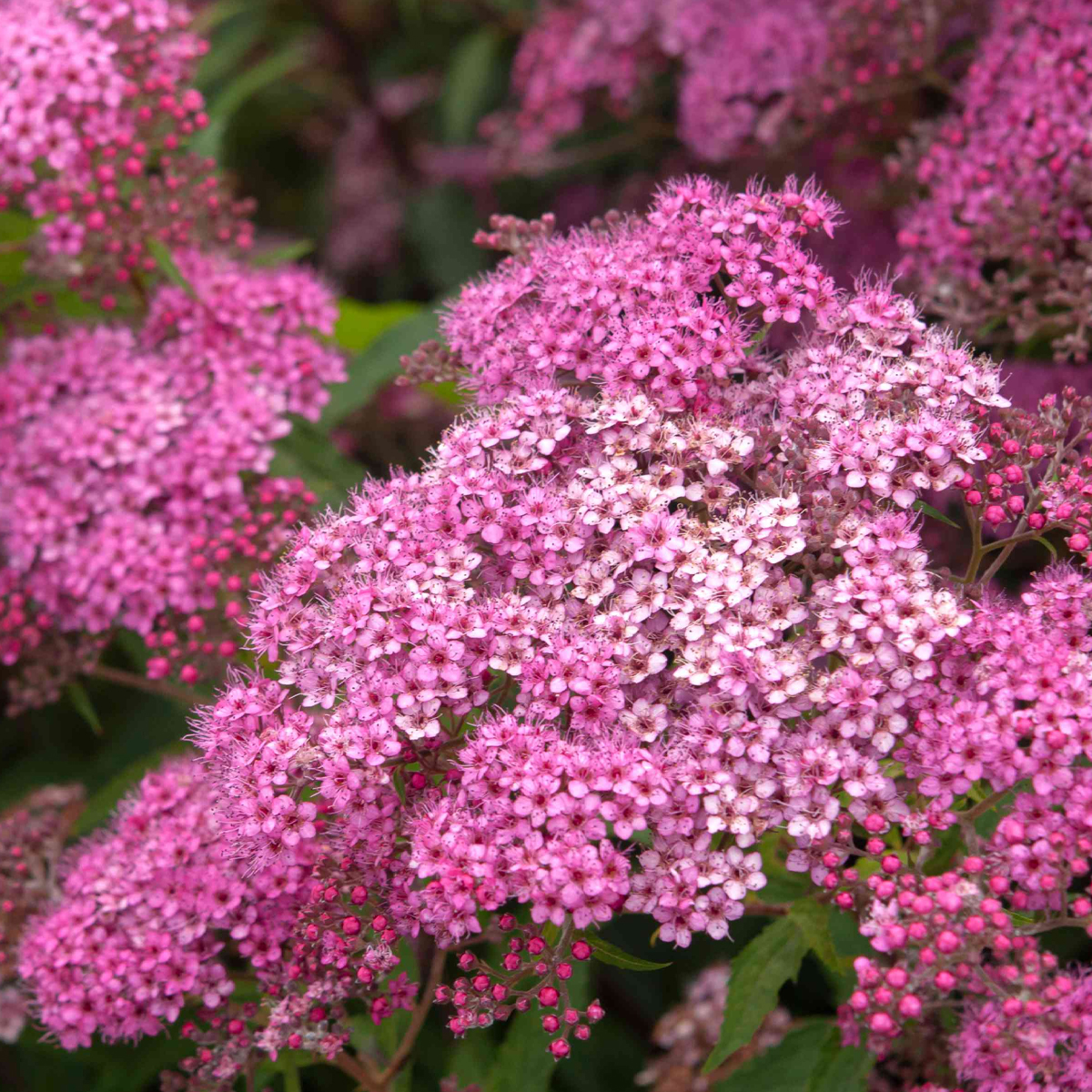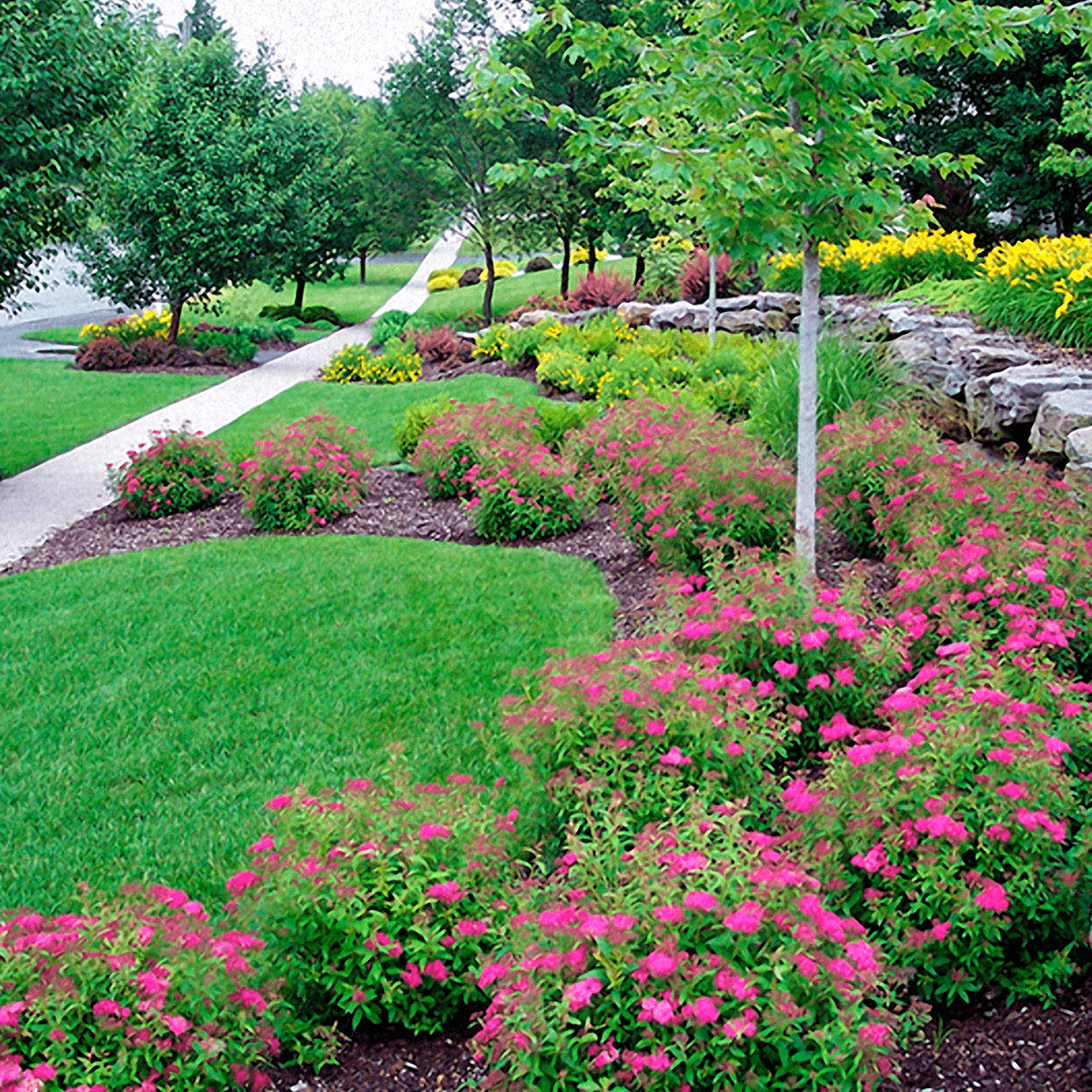As a whole has a few distinct identifying physical features. Each is deciduous, mostly with narrow, oval-shaped leaves called lanceolate. They all have many tightly clustered flowers with five sepals and five petals. These similarities are often as far as it goes when it comes to the genus. This is great news for designers and gardeners looking for variety in their landscapes.
Spiraea Care: Choosing an area that drains well and gets a fair amount of sun is essential for all spiraea species. It’s still important, however, to do your research when searching for a suitable species for your garden, as their care and condition requirements can vary considerably. The details below are general guidelines and not specific to any particular species.
Light: To achieve the best bloom production and foliage coloration, ensure that the shrub gets full sun.
Soil: Spiraea prefers well-drained soil that has a neutral pH. Test the acidity level before planting and occasionally during the season to determine if soil amendments are needed.
Water
Keep newly planted Spiraea well-watered until they have established themselves. After this point, it is okay to taper off watering as it is only necessary when the soil is dry. This method is preferred because the genus has a tendency to develop root rot and overwatering can cause serious issues.
Temperature and Humidity: Spiraea can be winter hardy down to 15 degrees Fahrenheit. It is a good idea to check the individual species’ details, but the general range is USDA 4-8, with some being a little bit pickier than others.
Fertilizer: The Spiraea genus is not one that feeds heavily. If it is producing healthy and vigorous blooms, no fertilization may be needed. If feeding is required, it should only be done annually in the early spring with a slow-release fertilizer.
Pruning: Any spiraea plant can benefit from a vigorous pruning of old wood. Cut each stem back, leaving at least five buds on each. Thin out branches from the middle to improve overall air circulation around the plant. Remove any suckers, and generally tidy up the plant. Most species should be pruned only after flowering is finished for the season.




